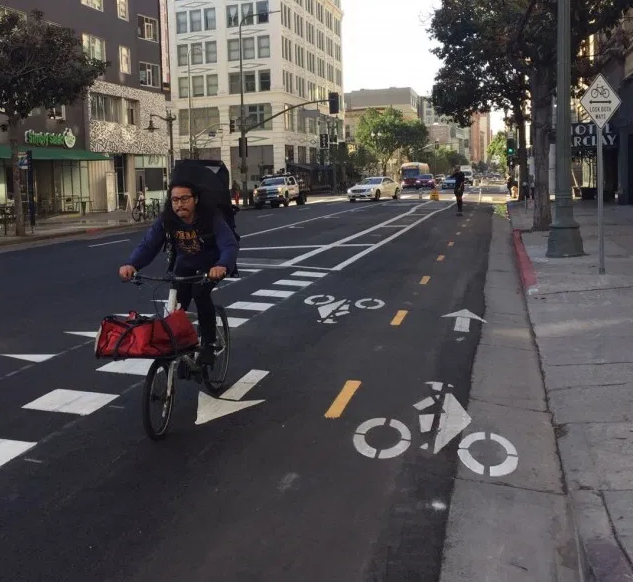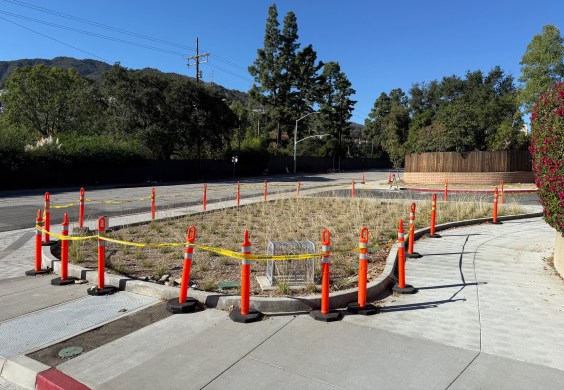At yesterday's California Transportation Commission meeting, most of the agenda items focused on COVID-19 impacts on transportation, transportation funding, and responses from state agencies. Staff recommended delaying deadlines for several S.B. 1 programs to give cities time more time to apply for grants.
They also asked the CTC to delay deadlines for the next funding round of the Active Transportation Program that were just approved in March. The commission approved the request, so the new application deadlines are:
- Project applications: September 15, 2020 (was June 15)
- Staff recommendations for statewide, small urban and rural projects: February 15, 2021 (was November 16, 2020)
- CTC adopts staff recommendations: March 2021 (Was December 2020)
- MPOs submit draft list of recommended projects in their regions: April 15, 2021 (was January 18)
- MPOs submit final list of recommendations: May 14, 2021 (was April 2)
- CTC adopts MPO lists: June 2021 (was May)
The new quick-build pilot program, which would allocate around $7 million for a few projects, is also delayed - but not as long. Staff says that these applications are much simpler and require less data than the regular ATP applications. In addition, the purpose of the program is to address immediate safety concerns by quickly transforming infrastructure, and a longer delay would not serve that purpose.
The applications for quick-build projects will move from June 15 to July 15, and CTC staff plans to finalize its recommendations by September 15--earlier than the previously announced November 16--so the project list can be adopted by the commission in December.
CTC staff said that many of the agencies that apply for ATP grants are small, and have limited capacity to complete the applications while working remotely. In addition, health departments are frequent partners on ATP projects, but have been busy responding to COVID-19 issues and can't work on these applications. Safe Routes to Schools programs require coordination with school staff, who are currently focusing on remote teaching and are also unavailable for planning. In addition, the requirement for "meaningful public engagement" will be difficult to achieve during the shelter-at-home orders.
The commission also approved deadline delays for several S.B. 1 (gas tax) programs. The Local Partnership program revised submission deadlines from June 12 to June 30 (this would give cities a total of about three and a half months to work on them, said staff). The Solutions for Congested Corridors submission deadline was moved from June 30 to July 17, and the Trade Corridors Enhancement program from July 15 to August 3.
There was no change made to the timeline for making decisions about funding.
Under the Local Streets and Roads Program, cities are required to submit lists of projects they will fund to the CTC, but have said it could be difficult to get those lists approved while city councils are not meeting because of shelter-at-home orders. In response, the commission extended that submission deadline from May 1 to July 15. Commissioners and staff also briefly discussed ways to allow temporary leeway for the "maintenance of effort" requirements these funds impose to keep projects moving forward.
At the same meeting, Caltrans director Toks Omishaken talked about Caltrans' response to the stay-at-home orders. The department has sped up major highway construction projects - like a bridge replacement on U.S. 101 in San Francisco - that have long timelines because of the need to work at night, when traffic is light. It has also shifted almost ninety percent of its work force to telework, from about five percent that had the capacity to occasionally work from home.
Two noteworthy items he mentioned were a push from rural counties to delay Caltrans' implementation of S.B. 743, which involves shifting from measuring traffic delay to measuring induced traffic from projects. Caltrans has already pushed its deadline from July to September--although note that this is only for Caltrans projects. The new rule under CEQA takes effect in July for non-transportation development, no matter what else Caltrans decides.
He also noted, with some horror, that the California Highway Patrol is reporting an 87 percent increase in the number of speeding tickets its officers are issuing to drivers going over 100 mph. "This is absolutely unacceptable," said Omishaken, both for the safety of other drivers on highways as well as for people walking, biking, and taking transit on city streets.
The meeting closed with a discussion of the hard hits being taken by public transportation. Ridership has cratered everywhere, but especially on commuter routes as workers who can stay home do so. This has led to a huge decrease in fare revenues, meaning future difficulty for operators to meet "farebox recovery" requirements to receive funding. In addition, because many - but not all - agencies have stopped charging fares, eliminating cash fares to protect drives and riders, so they are pretty much not bringing in any fare revenue at all right now even though they continue to provide needed services.
That will have future implications, as will the loss of tax revenues, which pay for large chunks of transit agency budgets.
Michael Pimentel of the California Transit Association submitted a list of statutory and regulatory relief measures the association is requesting to keep transit from completely going under. These include temporarily eliminating penalties for noncompliance with efficiency measures, since even once riders return to transit, they will likely need more space per person. Crowded trains and buses may move riders efficiently, but they will not be a good idea, maybe for a long time.






